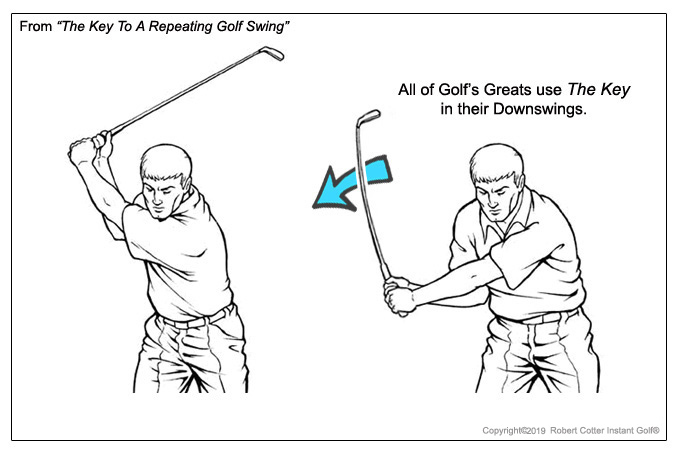Did you know that roughly 85% of recreational golfers slice the golf ball? You may be in that category. I know I used to struggle with a “banana ball” early in my golf career.
 And even those golfers who struggle with a hook still intermittently throw in a slice during a round. It’s frustrating to miss both sides of the fairway or green let alone one.
And even those golfers who struggle with a hook still intermittently throw in a slice during a round. It’s frustrating to miss both sides of the fairway or green let alone one.
Some help for golfers who slice came with the introduction of golf ball launch monitors. They were truly a revolution in quantifying exactly what was happening at impact.
Early in my ball design career I was fortunate to work with some of the first launch monitors. 20+ years ago the early monitors had sound activated cameras that snapped pictures of metal dots that were placed in a pattern on the dimples of the golf ball.
The cameras took images at impact and just past impact, and then a computer algorithm calculated the ball speed, launch angle, back spin, and side spin rate (slice, hook) based on the changing positions of the metallic dots.
These days the monitors use Doppler radar similar to what the military uses to track the movement and position of missiles in 3 dimensions. The data they produce is nothing short of amazing.
In fact, the monitors proved that some formerly held beliefs about golf ball start direction (off the club face) and flight pattern (slice, hook) were invalid.
For instance, it was always thought that the initial direction of the flight of a golf ball was due to the path of the club head (in to out, out to in , etc…). And then, after the ball was well in flight, the initial club face angle (pointing left, square, or right) would contribute to the rest of the flight.
Well it turns out the club face orientation at impact is responsible for about 85% of the initial flight direction of the ball and the club head path contributes the other 15%! This was a breakthrough particularly for instructors who had been inadvertently confusing cause and effect, particularly with the slice.
So how can we use this knowledge to help cure the slice? If you are a right handed golfer and your golf ball starts left and then bends right, the club face is pointing to the left when the ball leaves the face, and the club head is moving slightly right to left (out to in) through impact.
This condition has become affectionately known as being “over the top” in the down swing. And this is where the title of this article comes into play.
Golfers who slice typically don’t have enough “Down” in their down swing as they start back to the ball from the top of the back swing. Good players have an initial down move that lowers the hands and shaft so the club head can approach the ball from a slightly in to out path that will give the ball a counterclockwise, draw spin.
The down part of the down swing is tricky and counter-intuitive. Because the part time player is so eager to hit the ball and move it toward the target, the upper body gets active and the hands move out before they move down. This is part of the formula for the deadly “over the top” move.
Some golfers try to pull the hands and arms down into impact which can work for some but with most it leads to tension and pulling the club off plane which leads to miss hits.
Some good players let the club free fall and then “catch the drop” ½ way down and rotate to the finish. This is extremely difficult to master and requires hours and hours of practice. This method never worked for me. I still struggled with my ball striking due to inconsistency on the down swing.
One day I was working with some PGA Tour players who were testing new ball designs and I noticed something subtle but distinct about all of their down swings. It was my Aha moment!
This discovery quickly led to a theory, some testing, and bang, the proof in my own game. It was real, it worked, and it transformed my game, virtually overnight. It was the final piece of the puzzle. I called it “The Key To A Repeating Golf Swing”.
I became consistent across all clubs, drive to wedge. My swing, particularly the down swing, was now on “autopilot” and I was reaping the rewards. In fact, my discovery of The Key allowed me to take my scores to the 70’s after struggling for years with poor ball striking and a high handicap index.
Since that day on the test range, I have had the privilege of teaching The Key to over 5000 golfers in 60+ countries, both in person and via the Internet. The testimonials have been astounding and it gives me great pleasure to share my experience with eager, serious golfers.
Learn “The Key” and receive 5 bonuses including my new 2013 Ball Recommendation Reports.
The Right Golf Ball for you combined with “The Key To A Repeating Golf Swing” is a winning combination that translates into more distance and accuracy, lower scores, and more enjoyment.
To find out more about “The Key To A Repeating Golf Swing simply Go Here Now.
